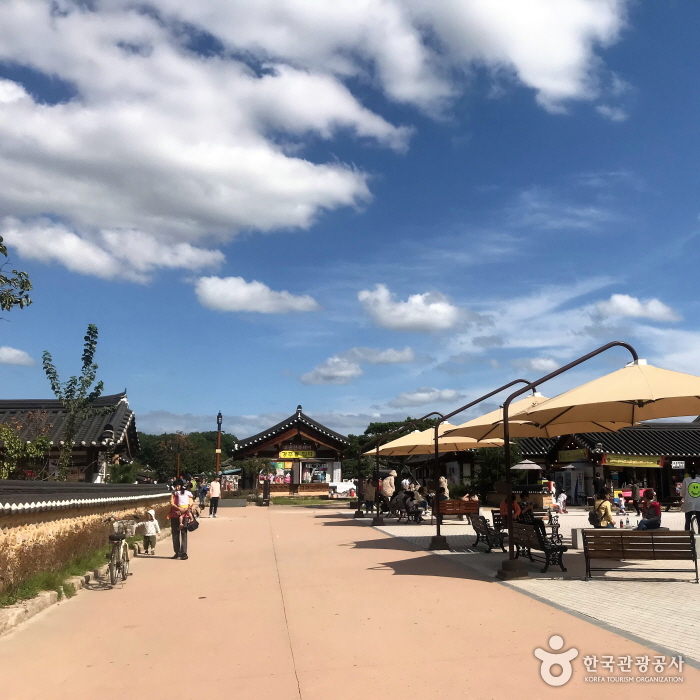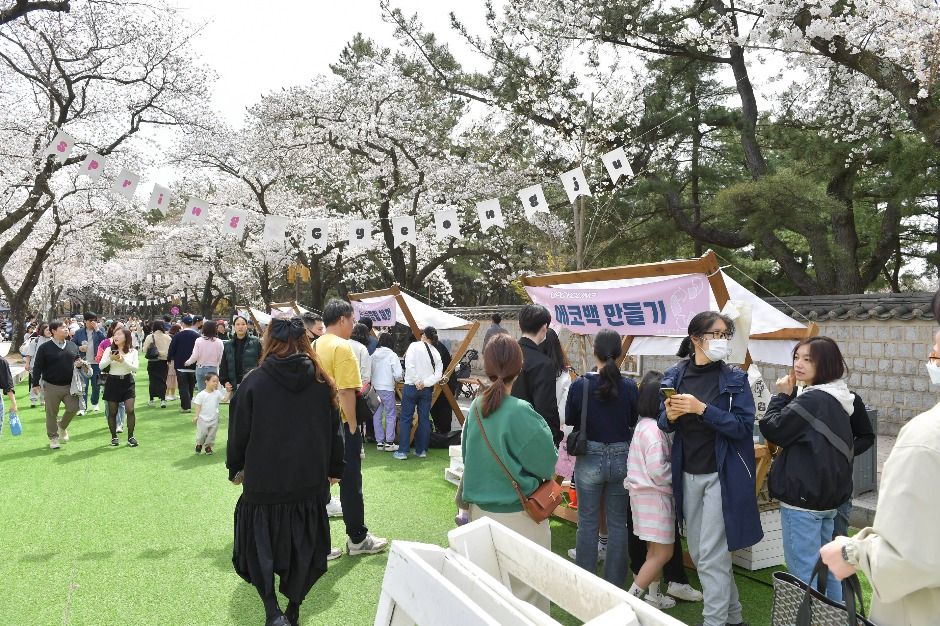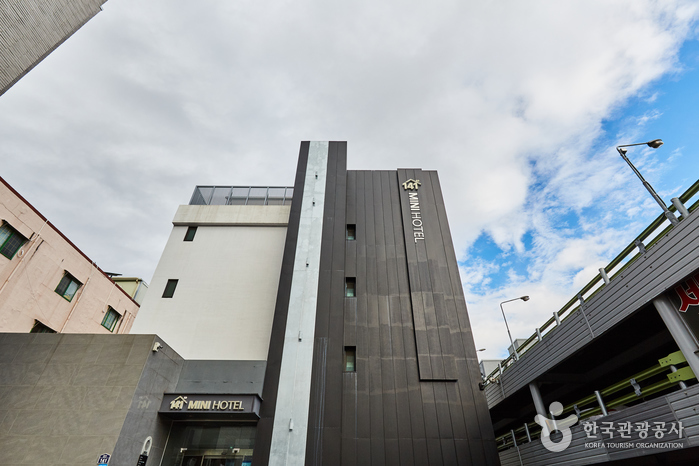Yosukgung 1779 (요석궁1779)
17.3Km 2025-09-02
19-4 Gyochonan-gil, Gyeongju-si, Gyeongsangbuk-do
Solar del Pabellón Poseokjeong de Gyeongju (경주 포석정지)
17.4Km 2025-06-25
Namsansunhwan-ro 816, Gyeongju-si, Gyeongsangbuk-do
Se levanta sobre una roca cerca de un arroyo, y Poseokjeong (superficie de 7.432 ㎡) fue designado monumento privado nº 1 el 21 de enero de 1963. La ubicación es la que había tenido el palacio de la villa real de la dinastía Silla (57 a.C.-935), pero las edificaciones ya no existen más y solo queda en el lugar un trayecto de agua con una roca de forma de concha. Poseokjeong fue denominado de esta forma porque las canaletas de la roca se semejaban a las rugosas conchas de abulón. Poseokjeong está construido con 63 rocas. Tiene un ancho de 35 cm, y una profundidad media de 26 cm, y la longitud total alcanza los 10 m. Se dice que el agua del curso del valle de Namsan fue traída hasta aquí haciendo que saliese a borbotones a través de una piedra tortuga. Pero la tortuga ya ha desaparecido. Se dice que los reyes de Silla iban al lugar acompañados de sus oficiales y nobles, y que hacían flotar sus copas de vino sobre el borbotón del agua que fluía por la canaleta de piedra y antes de que su copa flotante llegara ante sí, debía recitar un poema. Junto con Poseokjeong, el Valle de Poseok era muy querido por la gente de los días de Silla por sus limpias aguas y hermosos paisajes. Por todo ello, el palacio de la villa real durante el reino de Silla fue construido aquí. Hoy en día, los árboles de zelcova, pino y bambú preservan el aire acogedor y relajante del lugar.
Aldea Gyochon en Gyeongju (경주 교촌마을)
17.5Km 2025-04-24
Gyochon-gil 39-2, Gyeongju-si, Gyeongsangbuk-do.
Situada en la ciudad de Gyeongju, la Aldea Gyeochon es un pueblo de casas tradicionales hanok que permite a los visitantes ver la vida del famoso clan Choi. Los visitantes pueden ver su casa y probar el licor Beopgju Gyodong de Gyeongju.
Festival de la Calle del Muro de Piedra del Parque Daereungwon en Gyeongju (경주 대릉원돌담길 축제)
17.5Km 2025-03-14
Hwangnam-dong, Gyeongju-si, Gyeongsangbuk-do
054-776-5267
Gyeongjuhanok 1st (경주한옥1번가)
17.6Km 2025-07-24
20, Cheonwon 1-gil, Gyeongju-si, Gyeongsangbuk-do
Standing at the entrance of Cheonwon Village in Gyeongju, Gyeongsangbuk-do, Gyeongju Hanok First is a hanok stay combining the beauty of tradition with modern convenience. All rooms are Korean-style with comfortable bedding on the floor, and all have a toilet and bathroom. One guestroom has its own kitchen, while the others have basic cooking facilities in a shared kitchen. The spacious yard is decorated with figurines in traditional clothes. Nearby tourist attractions include Anapji Pond, Cheomseongdae Observatory, and Gyeongju Museum.
141MINIHOTEL/ 141미니호텔
17.6Km 2025-08-11
141, Wonhyo-ro, Gyeongju-si, Gyeongsangbuk-do
+82-10-9031-1628
'Located in Gyeongju, the capital of Silla Kingdom for 992 years, 141 Mini Hotel lets you enjoy hotel services at motel room rates. It has sauna, book café, small conference room, and business center for the convenience of its guests. The hotel staff are friendly as well. It's very conveniently located, since it's only 5 minutes away from Gyeongju Station and 10 minutes away from the Bus Terminal, both on foot. There are many popular tourist destinations in the vicinity of the hotel, including Donggung Palace, Wolji Pond, Cheomseongdae Observatory, and Bulguksa Temple.
Hwarang Guesthouse (화랑게스트하우스)
17.6Km 2025-07-18
136-1, Wonhyo-ro, Gyeongju-si, Gyeongsangbuk-do
Hwarang Guesthouse near Daereungwon, Gyeongju-si, Gyeongsangbuk-do, offers guestrooms each with separate toilet and bathroom. Refrigerators and laundry facilities are provided for guests, as are a shared-use PC and fax machine, while travel guides and other books are available in the lobby. Silla Kingdom sites such as Daereungwon, Cheomseongdae, Donggung Palace and Wolji Pond are reachable on foot; alternatively residents can hire a bicycle for 7,000 won a day.
Kelimgung (계림궁)
17.7Km 2025-07-18
932, Poseok-ro, Gyeongju-si, Gyeongsangbuk-do
Kelimgung is a comfortable hanok pension near the Oreung tombs in, Gyeongju, Gyeongsangbuk-do; the name derives from Gyerim, the forest birthplace of Kim Alji who helped found the ancient Silla kingdom. The main building has four rooms and a shared kitchen, and there are two guest rooms in the yard, where barbecues can be held; reservations are required. Residents can experience traditional activities such as Gamasot cooking and Neolttwigi, and enjoy strolling in the nearby Oreung. Other nearby attractions include Banwolseong, Cheomseongdae, and Daereungwon.
Tumbas Samneung de Bae-dong en Gyeongju (경주 배동 삼릉)
17.8Km 2021-06-10
Bae-dong 73-1, Gyeongju-si, Gyeongsangbuk-do
+82-54-779-6100
Samneung significa "tres tumbas reales", y en este caso hace referencia a la de tres reyes del reino de Silla: Adala (8º de la dinastía), Sindeok (53º rey) y Gyeongmyeong (54º).
Hwangnam Bread (황남빵)
17.8Km 2025-03-19
783, Taejong-ro, Gyeongju-si, Gyeongsangbuk-do








 Español
Español
 한국어
한국어 English
English 日本語
日本語 中文(简体)
中文(简体) Deutsch
Deutsch Français
Français Русский
Русский